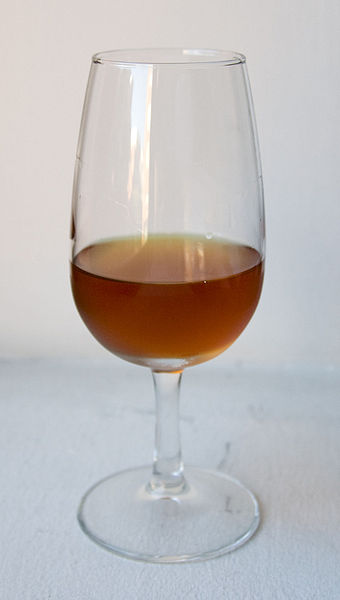A rosé is a type of wine that incorporates some of the color from the grape skins, but not enough to qualify it as a red wine. It may be the oldest known type of wine, as it is the most straightforward to make with the skin contact method. The pink color can range from a pale "onionskin" orange to a vivid near-purple, depending on the grape varieties used and winemaking techniques. Usually, the wine is labelled rosé in French, Portuguese, and English-speaking countries, rosado in Spanish, or rosato in Italian.
Sparkling rosé in the cave of Schramsberg Vineyards, in Napa, California, USA
A rosé wine from Washington state, USA
Many of the earliest red wines were closer in color to modern rosé since many of the early winemaking techniques involved pressing soon after harvest.
In the United States, a stuck fermentation while producing a red wine from Zinfandel would lead to the development of the popular rose-colored wine White Zinfandel.
The color of wine is one of the most easily recognizable characteristics of wines. Color is also an element in wine tasting since heavy wines generally have a deeper color. The accessory traditionally used to judge the wine color was the tastevin, a shallow cup allowing one to see the color of the liquid in the dim light of a cellar. The color is an element in the classification of wines.
Judging color is the first step in tasting a wine.
Glasses of Beaumes de Venise white and rosé
Glass of Amontillado sherry
A glass of Vin Santo with its characteristic amber color








